In Siena, in the heart of the monumental complex of Santa Maria della Scala, an important chapter of 14th-century painting returns to view. After a long and careful restoration, the fresco cycle of the Thebaid, attributed to the Sienese painter Lippo Vanni (Siena, active between 1340 and 1375) and datable to the early 1340s, has been returned to the community. The intervention, promoted and carried out by the Society of Executors of Pious Dispositions, brought to light a work of exceptional historical and artistic value, allowing a rare example of monastic and hermit iconography to be rediscovered in the Tuscan context of the 14th century.
The pictorial complex, which decorated the ancient access room of the Compagnia dei Disciplinati, now the historical headquarters of the Society promoting the restoration, will be open to the public starting Nov. 7, 2025, and permanently included in the visiting itinerary of the Santa Maria della Scala museum. The official presentation is scheduled for Nov. 6 at 4 p.m., in the Sala Sant’Ansano, with the participation of the restorers and scholars who oversaw the project.
The history of the rediscovery of this fresco cycle is relatively recent. In 1999, during the recovery and restoration work of the Hospital conducted by architect Guido Canali, the first traces of painting were identified under the whitewash covering the walls. The visible portions revealed the presence of monochrome scenes in red ochre, depicting episodes of hermit life and holy fathers in the desert of Thebes.
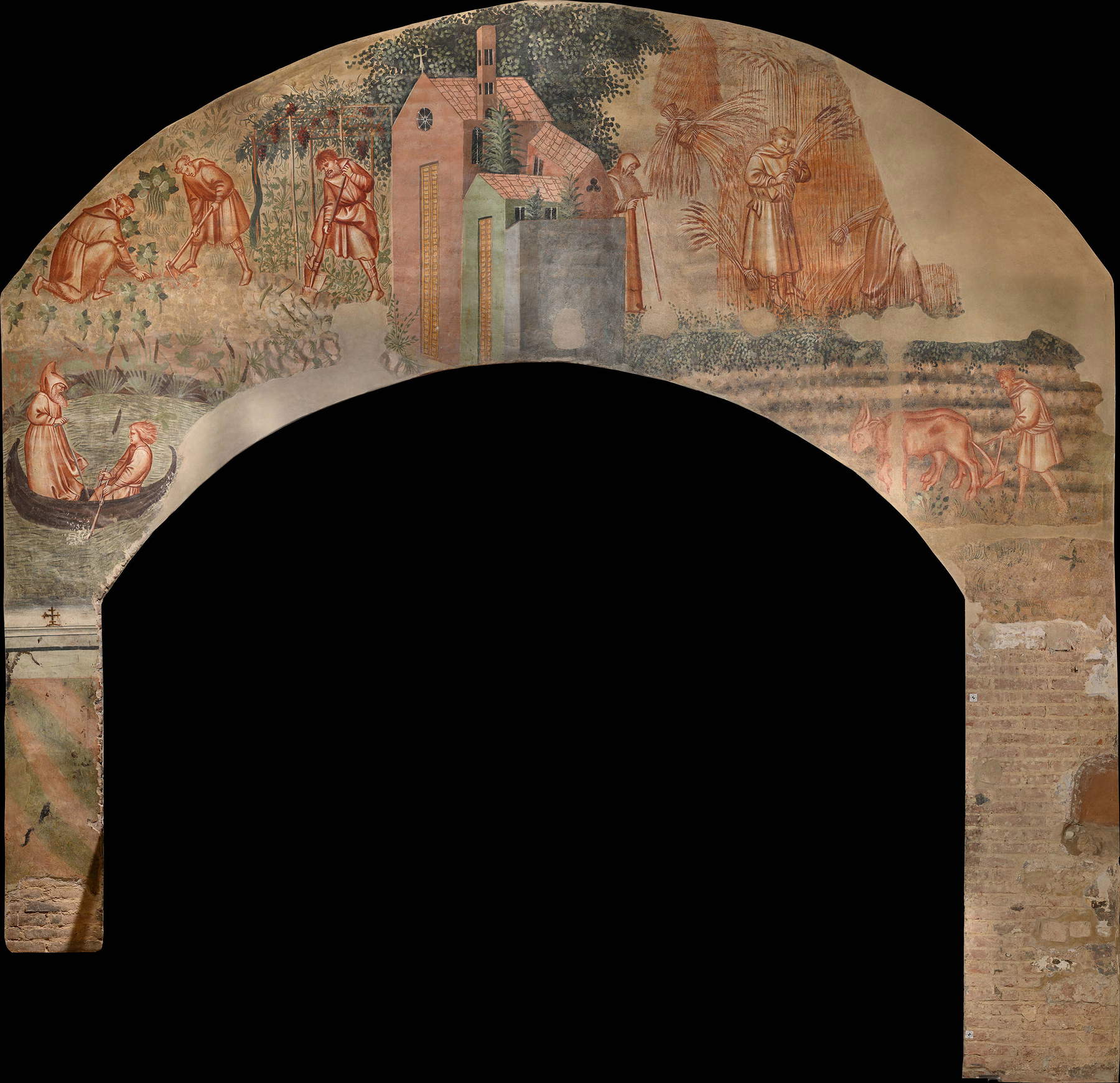

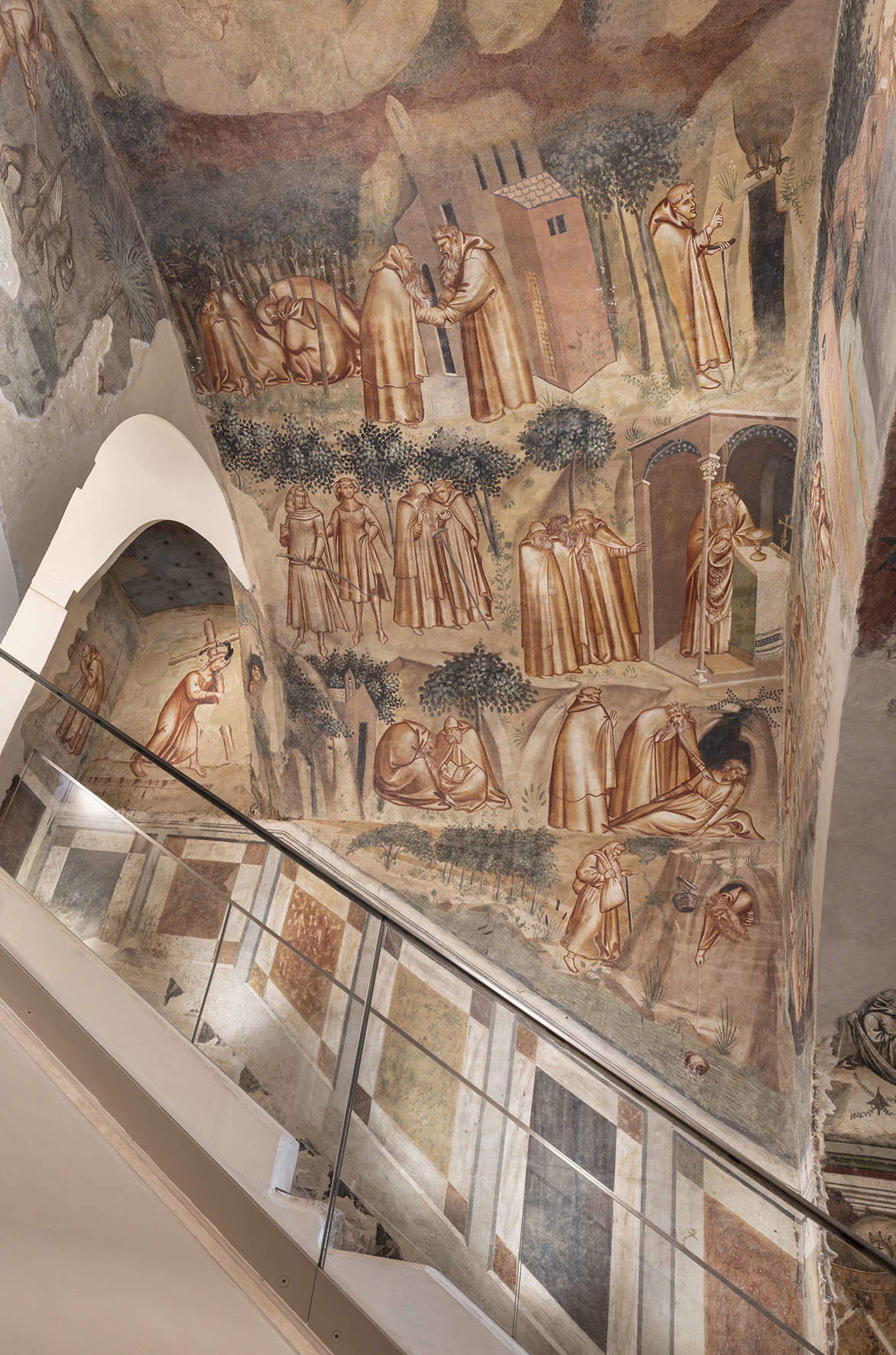
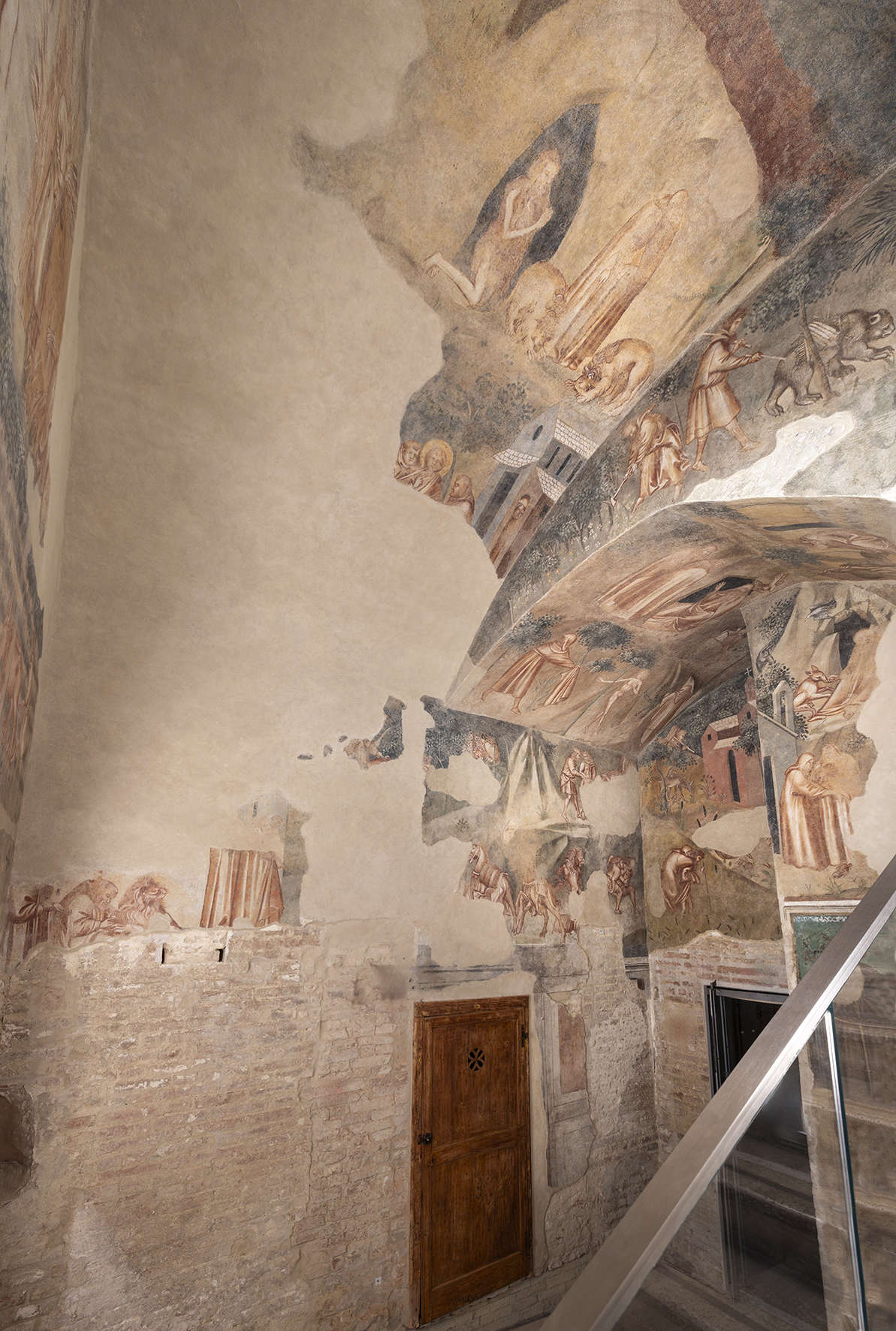


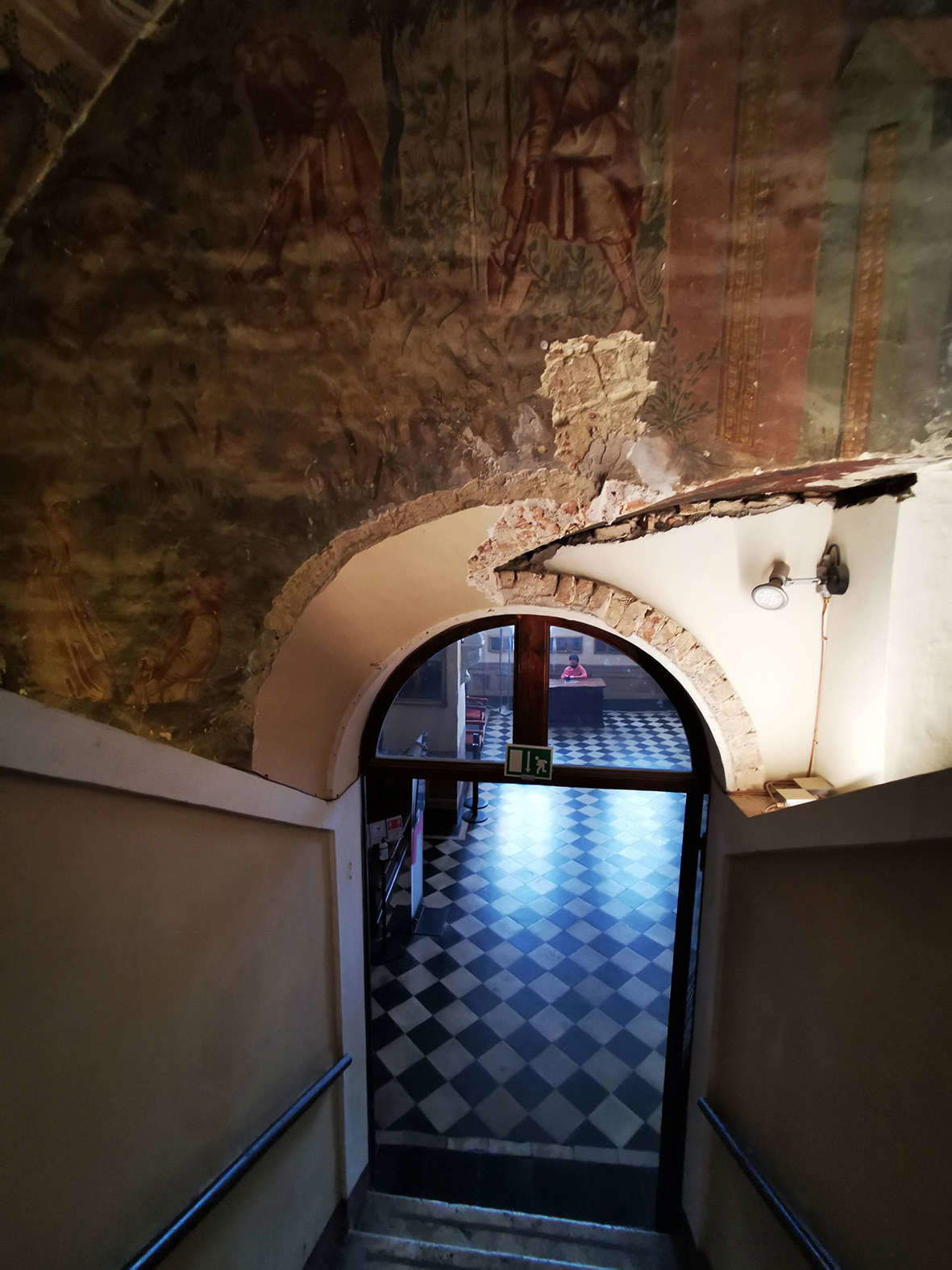
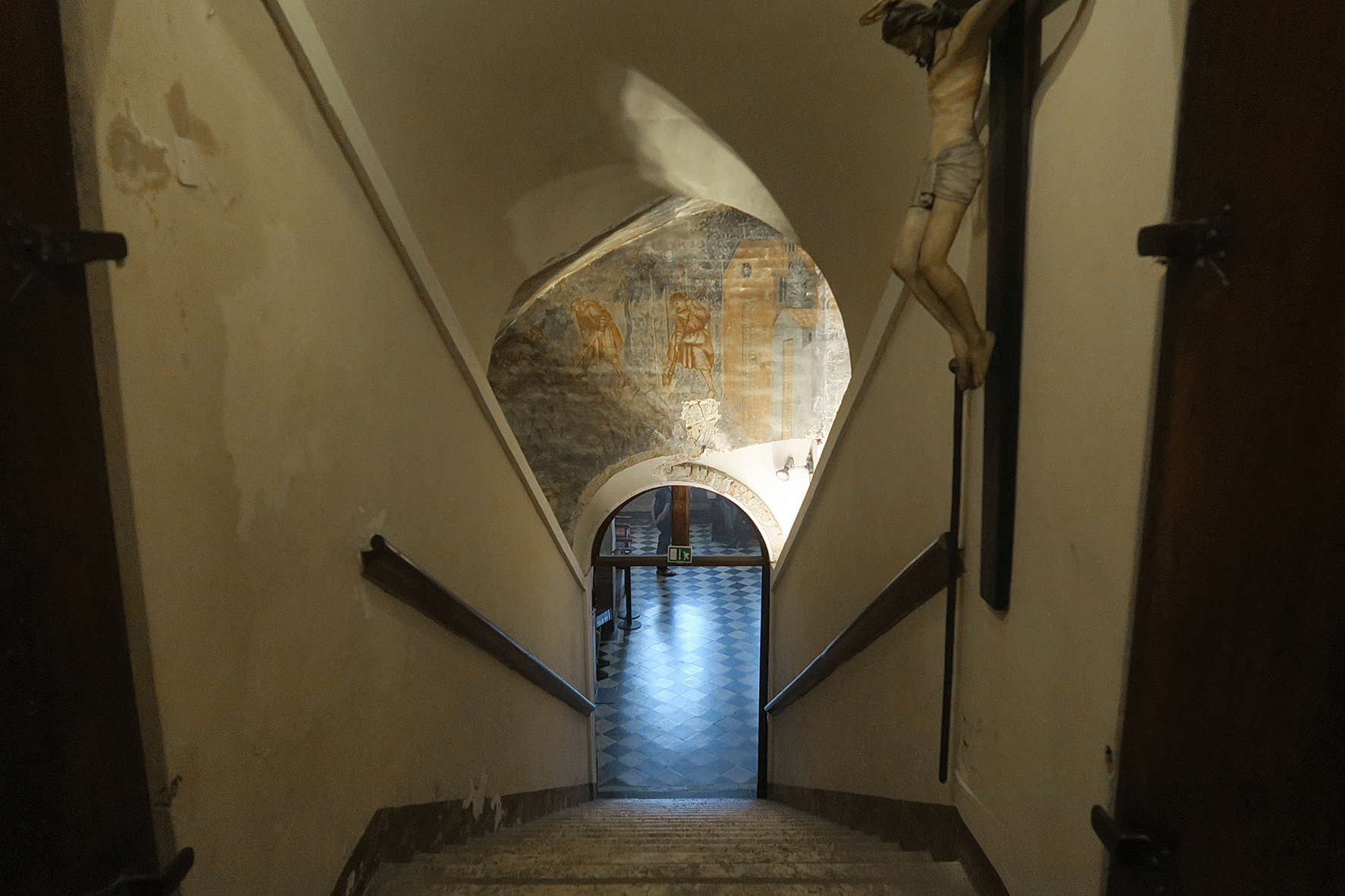
A few years later, the removal of a false ceiling made it possible to bring to light a larger extension of the pictorial cycle, although still partially covered by layers of lime and plaster residues. It was then that art historian Alessandro Bagnoli published a preliminary study in 2001 that made the discovery known and hypothesized its attribution to Lippo Vanni, an artist active in Siena in the first half of the 14th century and author of important religious and civic commissions.
The actual restoration work did not begin until 2021, thanks to the financial contribution of Robert Cope, president of the Vaseppi Foundation, who financed the complete uncovering, consolidation and cleaning of the frescoes. The project made it possible to recover the mural decoration in its entirety, restoring legibility and depth to the pictorial cycle and enabling a more precise analysis of its stylistic characteristics.
The Thebaid represents a subject of great fascination and rarity in medieval Italian painting. Set in the desert of Thebes in Egypt, it narrates episodes from the daily life of early Christian hermits and holy desert fathers, including St. Paul the Hermit, St. Anthony the Abbot, and St. Jerome. The scenes are inspired by the Lives of the Holy Fathers, a work of religious literature widespread in the Middle Ages and translated into the vernacular around 1330 by the Pisan Dominican Friar Domenico Cavalca, who contributed to the theme’s fortunes in the monastic and confraternal world.
In the Sienese cycle, the narrative does not follow a linear sequence, but develops as a series of isolated episodes set in a stark, rocky landscape dotted with cells and caves. The monks appear there intent in acts of meditation, prayer, work and penance, delineating a choral image of ascetic life. The iconographic layout, devoid of complex architectural references, is designed to suggest the quietness of the desert and distance from the world, in perfect harmony with the purpose of the original setting.
The Compagnia dei Disciplinati, in fact, was a lay confraternity devoted to prayer and penitential practices. In the same room that houses the “Thebaid,” the brethren prepared for the rites of flagellation and meditated on the human condition, assisted by images of saints and hermits who served as exempla virtutis: examples of purity and spiritual sacrifice set against sin and earthly corruption.
The value of this cycle lies not only in its pictorial quality, but also in its thematic and symbolic coherence. Lippo Vanni translates into images the moral and theological language of 14th-century Sienese spirituality, making tangible the search for salvation through isolation and penance. The prevailing technique, based on the use of monochrome in red ochre, gives the whole a sober and meditative tone, far from the pomp of color, and accentuates the spiritual dimension of the tale. The visual effect, at once essential and intense, restores the sense of an art at the service of devotion, born for contemplation rather than public representation.
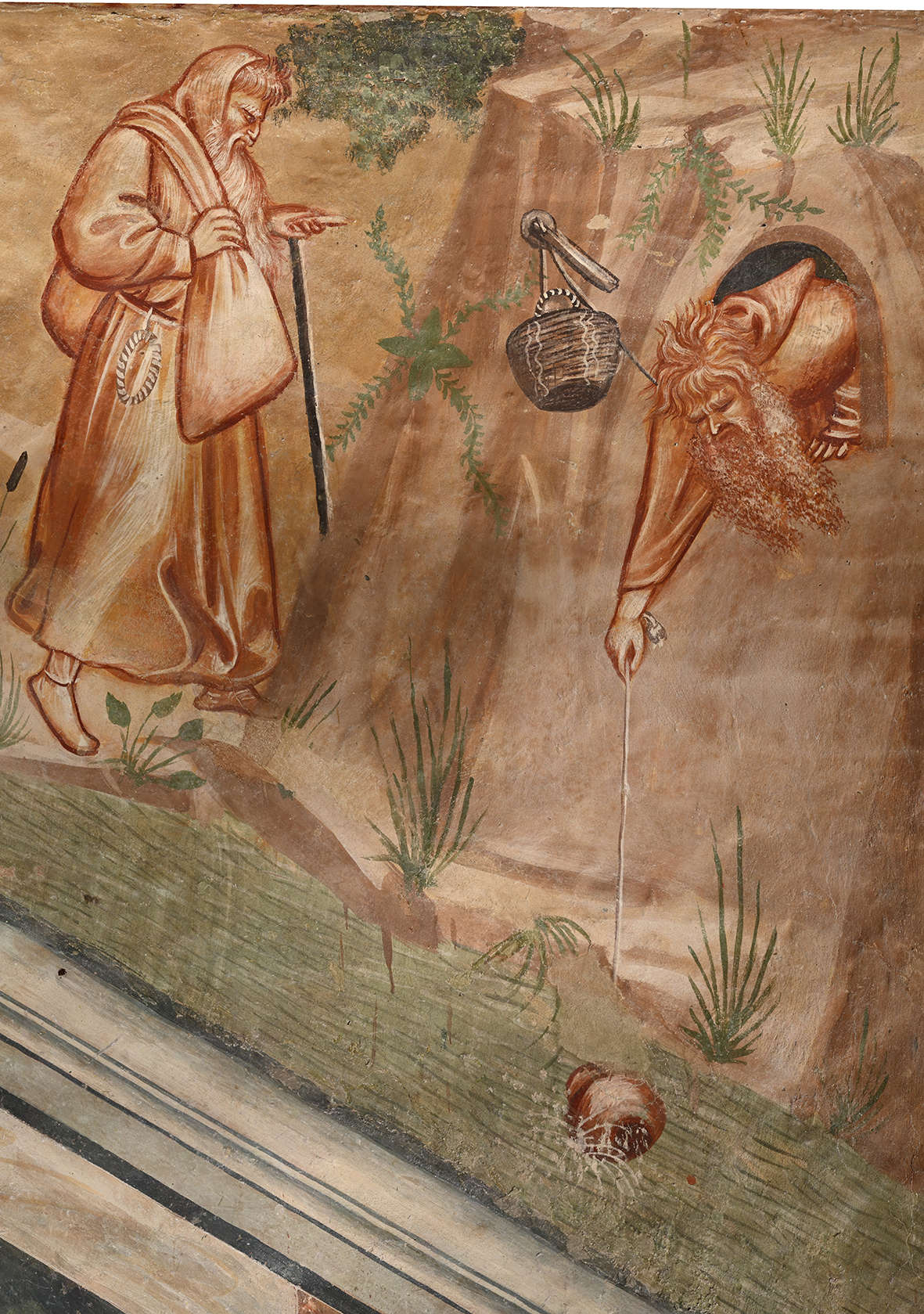
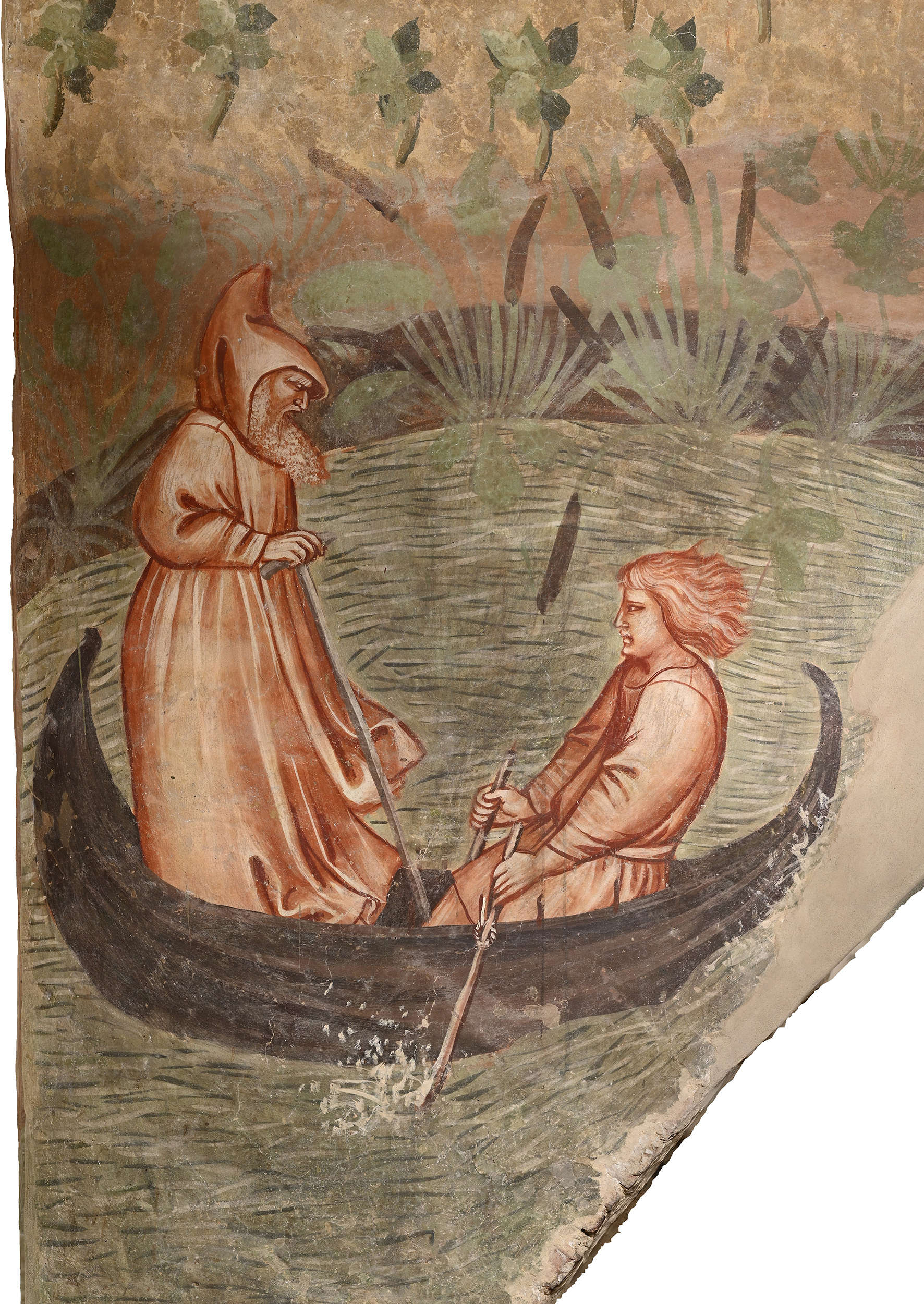

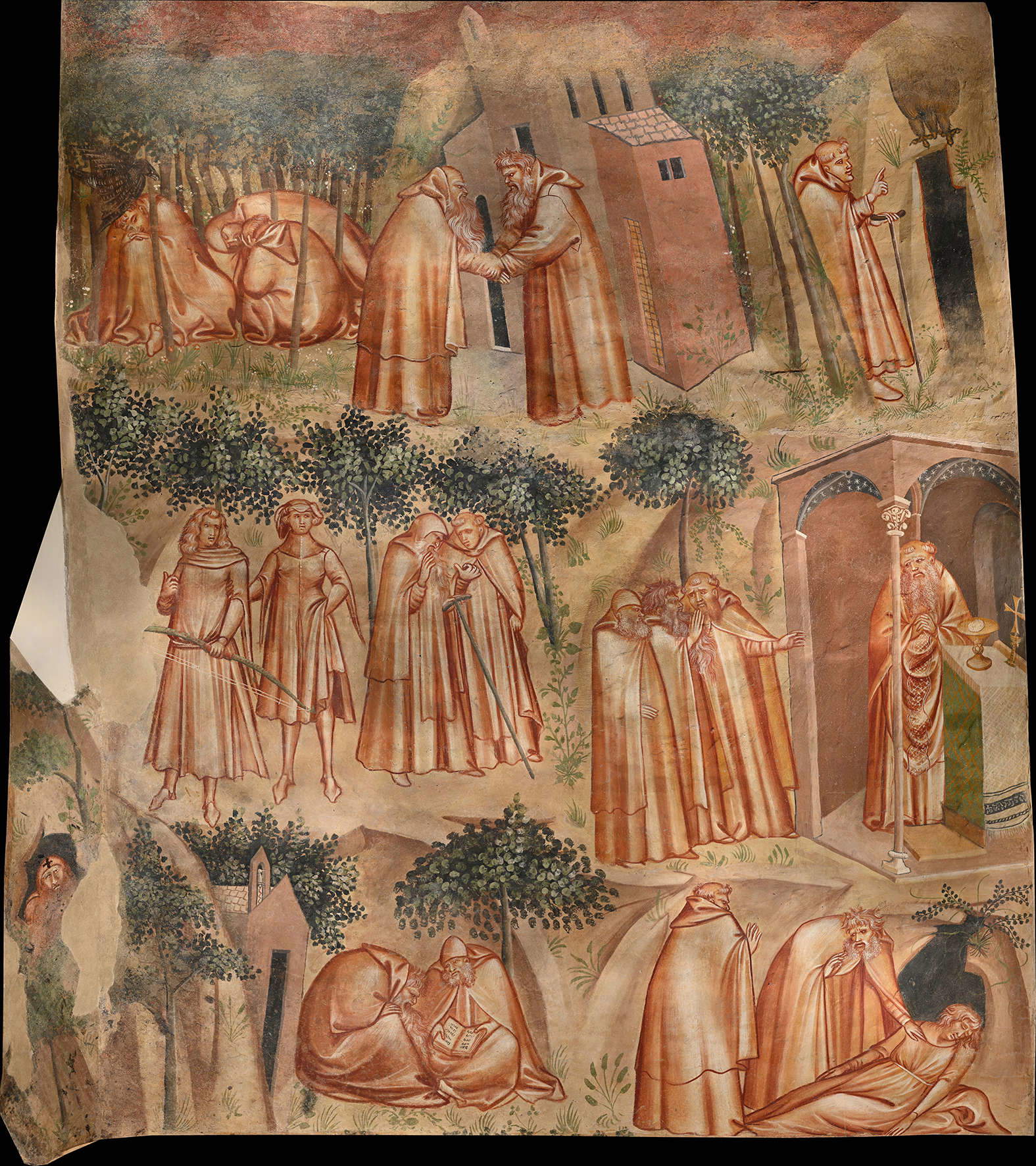
With the completion of the work, the rediscovered Thebaid becomes part of the exhibition itinerary of the Santa Maria della Scala Museum Complex, one of the city’s most significant cultural hubs, which already holds important examples of medieval and Renaissance art. Opening the cycle to the public makes it possible to expand knowledge of 14th-century Sienese painting and to contextualize it in the broader panorama of Tuscan confraternal spirituality.
The project also represents a virtuous example of collaboration between public institutions and private entities, such as the Society of Executors of Pious Dispositions, an ancient entity that has played an active role in protecting the city’s heritage for centuries, and the Vaseppi Foundation, whose support has made possible the return of a forgotten masterpiece.
From November 7, the public will be able to admire this extraordinary cycle of frescoes up close, rediscovering a place where art and spirituality continue to dialogue in the silence of the ancient vaults of Santa Maria della Scala. Information on times and tickets is available on the official website: www.santamariadellascala.com.
 |
| Siena, the Thebaid rediscovered: restored 14th-century frescoes by Lippo Vanni |
Warning: the translation into English of the original Italian article was created using automatic tools. We undertake to review all articles, but we do not guarantee the total absence of inaccuracies in the translation due to the program. You can find the original by clicking on the ITA button. If you find any mistake,please contact us.